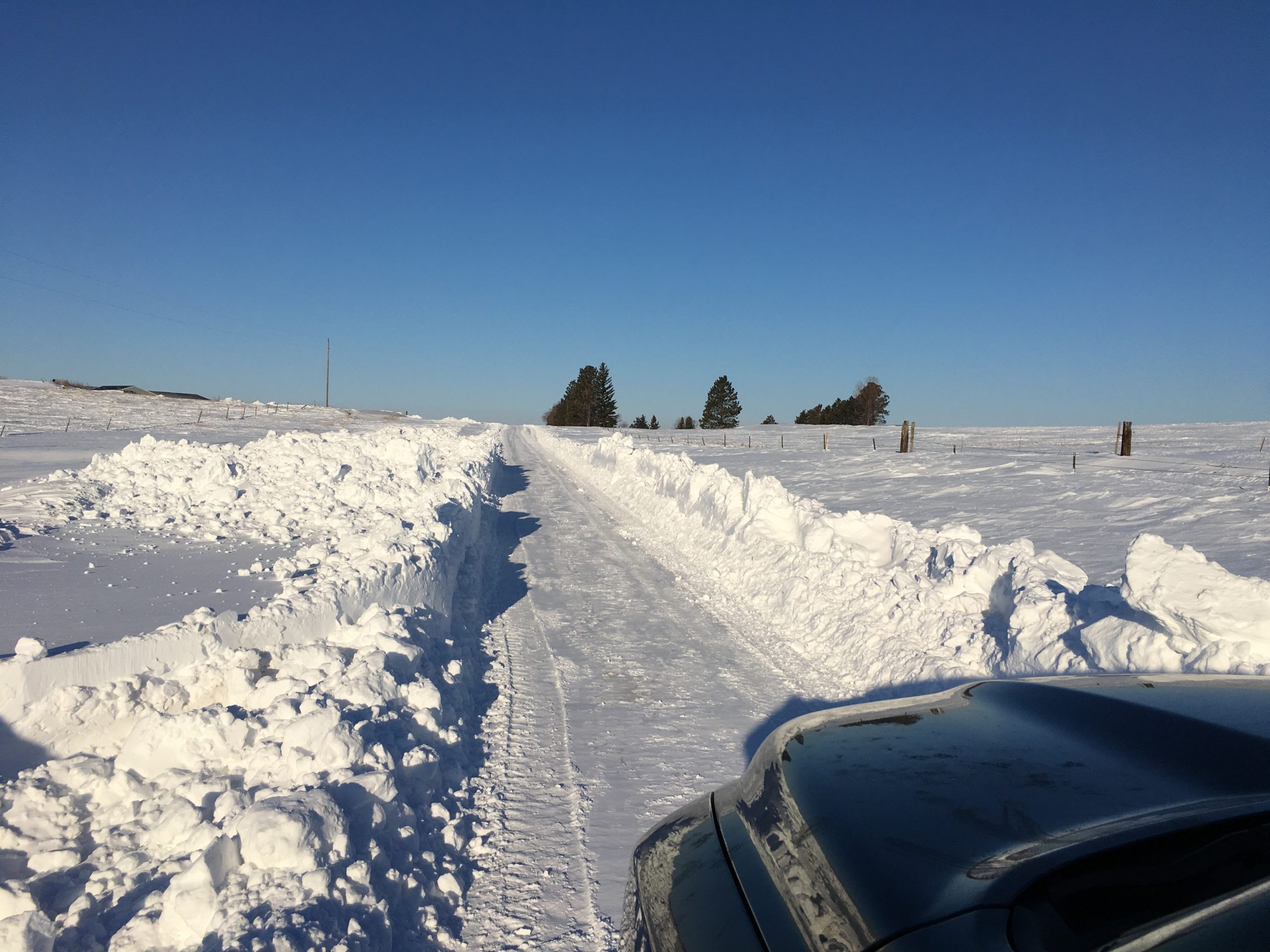The Battle to Shore Up Infrastructure in Rural Middle America
As talk of fixing aging roads and bridges surfaces again nationally, in North Dakota, Morton County Engineer John Saiki has had his hands full overseeing his county’s infrastructure for the past two years. It’s a common concern in small counties like Morton (pop. 30,796). This group of 599 counties in the upper swath of the country — from Maine to Washington state — forms Rural Middle America. The community type can be described as quintessential small-town America, propelled by a mix of manufacturing and agriculture as well as services to a lesser extent. Median household income in Rural Middle America clocks in at $52,600, slightly below the national average. The infrastructure tends to be older — and critical to communities’ economic and overall well-being.
We caught up with Saiki, first featured in our report on rural America, to discuss Morton County’s particular challenges, the impact of severe weather on his team and residents, and plans for repairs and improvements — including new support from the state. What can other communities learn from Morton’s conditions and approaches? Read our edited exchange below.
Roads
Ari Pinkus: What are Morton County’s roads like?
John Saiki: Morton County, located in south-central North Dakota, is home to approximately 31,000 people. It is the seventh-largest county in North Dakota in area at 1,936 square miles. The people are served by a system of roads totaling approximately 1,200 miles. Of that total, 108 miles are paved, while the remainder consists of a combination of gravel roads, minimum maintenance roads, and section line roads.
Minimum maintenance roads, accounting for approximately 10% or 120 miles of the county’s total road mileage, may or may not have gravel. They may be used twice a year, in the spring for planting and in the fall for harvest. Any maintenance supplied by the county may involve applying a couple of loads of gravel and using a Motorgrader to remove rough areas and ruts. Since these roads don’t see much traffic, there isn’t much maintenance to do. They may go many years without maintenance.
Section line roads are established by state statute and form the boundaries for each of the land sections — a section being one mile by one mile or 640 acres. With the county’s 1,936-square-mile area, there are a large number of sections. In a perfect world, the county section line roads would be established in a grid, with each road being one mile from the next road. In a county of Morton’s size, this would result in more than 5,000 miles of section line roads alone. Due to the topography and population distribution, there are actually few section line roads compared to the theoretical possibility.
Pinkus: Can you talk more about how the evolution of roads has impacted county residents?
Saiki: The majority of the roads in Morton County were built 75 to 100 years ago, and perhaps not even designed. They were paths that were widened for wagons, without much thought given to drainage or maintenance. At the time the roads were built, they were adequate. Farmers were able to get their crops to town for shipping on the railroad.
Fast forward to today. Roads that were built to carry horse-drawn wagons, many of which basically had the grass removed and gravel surfacing placed, are now carrying traffic that consists of automobiles and trucks. Many of the trucks are semi-trailers with a gross weight of 80,000 pounds — a far cry from horse-drawn wagons. There are some areas where the roads require rebuilding — not just maintenance or simple repairs. In these cases, the roads need to be reconstructed using an engineered base and surfacing, in order to stand up to these increases in traffic and vehicle weights.
Add to this the demands from people moving from the cities to subdivisions, the time and effort required maintain the roads in these subdivisions, and it is difficult to maintain a high level of satisfaction for many of the county’s citizens.
Pinkus: Do you have to contend with accidents?
Saiki: In addition to citizens’ demands, there is always a possibility of accidents. Fortunately, there have been few accidents — that may be attributed to our residents, who know where the roads and bridges narrow and drive accordingly.
Bridges
Pinkus: Describe why bridges are such a challenge in the county.
Saiki: Morton County has 216 bridges, the sixth-highest number in North Dakota’s 53 counties. (The counties surrounding Morton County all have fewer than 50 bridges each.) In the past three years, we have replaced what you might say are the low-hanging fruit. The bridges that need to be replaced now, due to age and deterioration, are larger and more complicated. Many will require us to bid out the work to contractors.
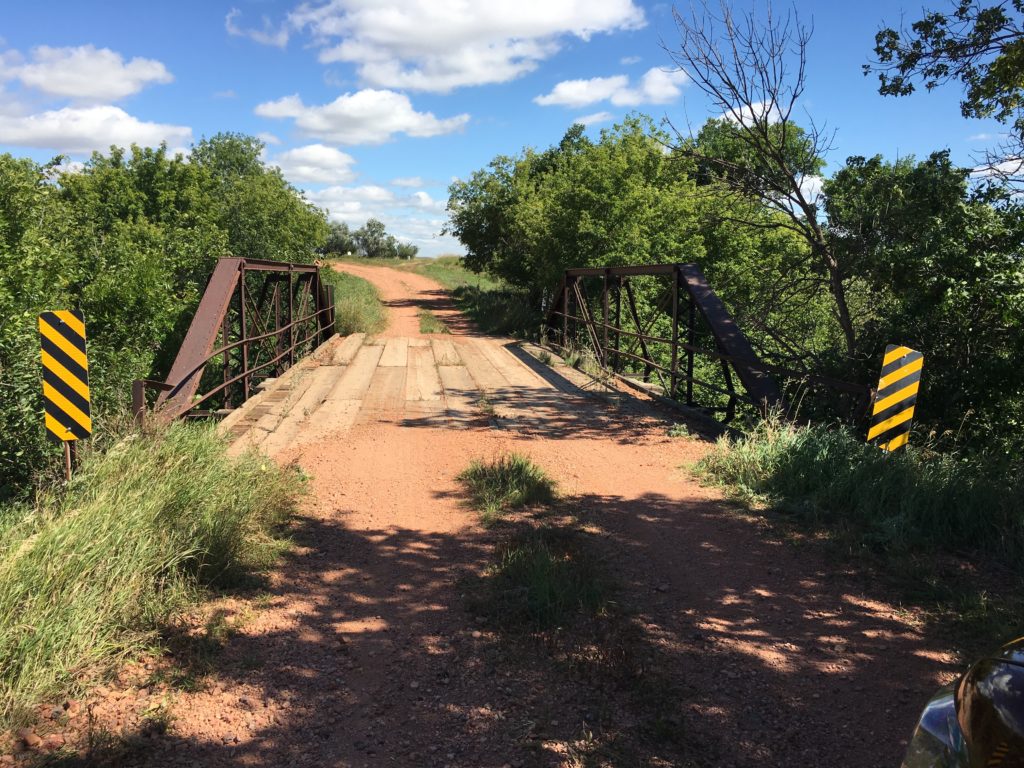
Pinkus: What is unique about the county’s bridges?
Saiki: Because of the county’s topography, a large number of watersheds, the areas drained by a creek or river, require bridges rather than pipe culverts, which are used where water needs to be directed to a specific location.
The other reason so many bridges are here: When these were built — some of them nearly 70 years ago — it was easier to span a stream with a timber bridge than to have large pipe culverts fabricated and delivered.
The bridges were built to match the roads. Most of the bridges are timber, with widths of perhaps 18 feet, sometimes less, and are usually a single lane. We install reflective object markers at the bridges’ corners to warn drivers of the narrow widths, but this is still not as safe as modern, wide two-lane bridges — bridges that are very expensive.
For example, we replaced a narrow 20-foot-wide bridge that was 130 feet long with one that’s 32 feet wide and 170 feet long. This bridge, completed by a contractor, cost $1.9 million. That’s equal to one-third of the annual budget for the Highway Department. The project was possible through federal financial assistance. That is one bridge done and many more to go.
Pinkus: Do you face driver accidents on bridges?
Saiki: Due to the low traffic volumes and the vast majority of drivers are residents familiar with the narrow bridges and other shortcomings, accidents are generally not an issue.
Background and Personnel
Pinkus: What’s your background in this field and in government?

Saiki: I’ve been living in Morton County for the past two years and in this position for most of that time. I came in with no county experience. I had worked for the Kansas Department of Transportation for 16 years, rising to Assistant Bureau Chief in the Bureau of Construction and Maintenance. I have also worked in the private sector, for the Burlington Northern Railway and an engineering consulting firm.
My learning curve here has been steep. I think my biggest obstacle is learning the county’s innerworkings and problem areas, such as flooding, snowdrifts, etc. It can be overwhelming. By overcoming a variety of weather obstacles and equipment issues, I am gaining more experience every day.
Pinkus: How many employees do you have?
Saiki: The Morton County Highway Department employs 32 people in four locations: Mandan, the county seat and main town; and the rural areas of New Salem; Glen Ullin; and Flasher. Of the 32 employees, there is a maintenance superintendent, three foreman, and 14 equipment operators.
Challenges
Pinkus: What are the key challenges you and your team face, particularly with road expansion?
Saiki: The number of employees performing the road and bridge maintenance has remained the same for the last 20 years, and they take on different roles as the needs and seasons change.
We have a Gravel Crew in the summer, which consists of six truck drivers to haul gravel and a laydown blade operator to order the gravel. We have a Dirt Crew that often works with the Bridge Crew when we replace a smaller timber structure. The Dirt Crew and Bridge Crew also work independently. These same employees become our Motorgrader Operators when conditions are good for blading and maintaining the roads. They also all work together during snowstorms as well as in other emergencies, such as flooding.
In the same 20 years, the number of miles of roads has increased as the County Commission has added new subdivisions every year, creating new challenges. Since the subdivisions are entire neighborhoods, many obstacles slow down snowplow operations: mailboxes, light poles, numerous driveways, and no areas to store the plowed snow. (While the mileage increase is small compared with the overall miles of roads in the county, the time required to maintain roads in subdivisions is much greater than for regular roads.)
Financial Needs
Pinkus: Talk about the costs and budgets you’re facing.
Saiki: With the cost increases in equipment, labor, and materials, the cost of maintaining the roads and bridges increases every year, yet budgets remain the same.
The tax base is relatively small because of the low population and residents who do not want their taxes to increase. The Morton County Sheriff Department and Highway Department have the two largest county budgets, with the Highway Department’s around $6.3 million.
Pinkus: What resources would you like to have?
Saiki: It would be nice to get an increase to purchase some new equipment as well as expand our maintenance and construction programs. With the current spending levels, we are not even maintaining the infrastructure we have. To improve our infrastructure’s condition, we would have to contract out work. This will require a significant increase in spending, upwards of 20% to 25%.
Weather and Climate Effects
Pinkus: What have the climate conditions been like over the past few years, and how has the weather affected your work and personnel?
Saiki: We had record snow in 2016. In 2017, we had a drought. In 2018, due to heavy rains in Montana, the Missouri River was approaching flood stage all summer with some minor flooding in the Heart River Basin, a tributary to the Missouri.
In 2019, we saw the coldest, wettest summer and fall since weather conditions were recorded. Perhaps this is normal, but growing up in Bismarck, North Dakota, I don’t remember these extreme conditions from year to year. The changes seemed to be more gradual and spread out over time.
From January until mid-April 2019, we received a lot of snow — significant snowfalls of four to six inches every three to four days. Enough snow that we had to plow almost constantly. For the first several months of the year, we constantly received calls in the office, mostly about blocked roads. While many of the county’s longtime residents tended to take the inconveniences in stride, new residents expressed more concerns.
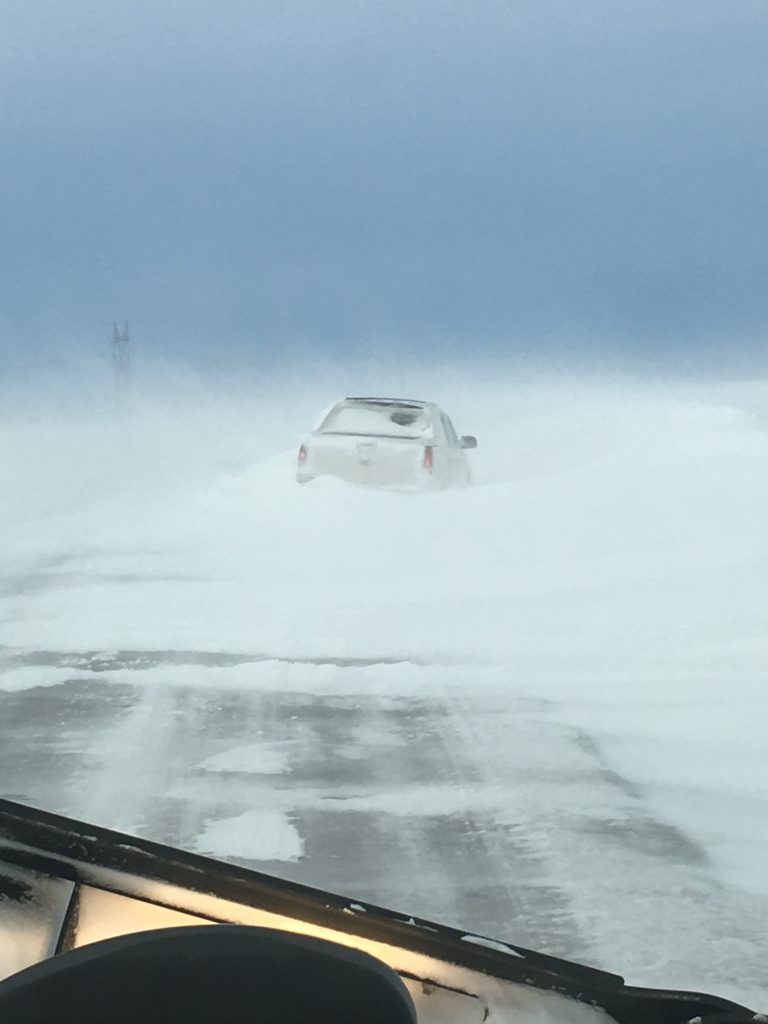
Last year, the conditions were over and above what I’d call routine plowing. In past years, we got warm spells, with temperatures in the 20s approaching freezing, so a crust would form on the snow. This did not happen in 2019, so every time the wind blew, there was drifting that closed roads — drifting that could not be cleared using conventional truck plows and Motorgraders. We were using our D-7 Caterpillar Dozer and our two 400-horsepower snowblowers, and hiring contractors with similar snowblowers to clear the drifts. There was more snow and drifting than many lifelong county residents could remember.
In March 2019, everything melted in about two weeks. We went from excess snow to flooding. We started by converting a portion of our fleet of trucks back to dump trucks rather than snowplows. Converting trucks this way allows us to use them year-round, which works well so we do not have money tied up in trucks that are used only half the year. However, we did not convert all of them since snow is a real possibility until early May.
Morton County has a budget line item for overtime, no matter what the need is. In 2019, this item, intended to be used over the entire calendar year, was exhausted by the end of March. Fuel use was higher than planned, as were the equipment repair costs. Equipment repairs ranged from broken plow components that had to be welded to hydraulic hose leaks. Some of the V-plows on the Motorgraders have been in service since the late 1980s.
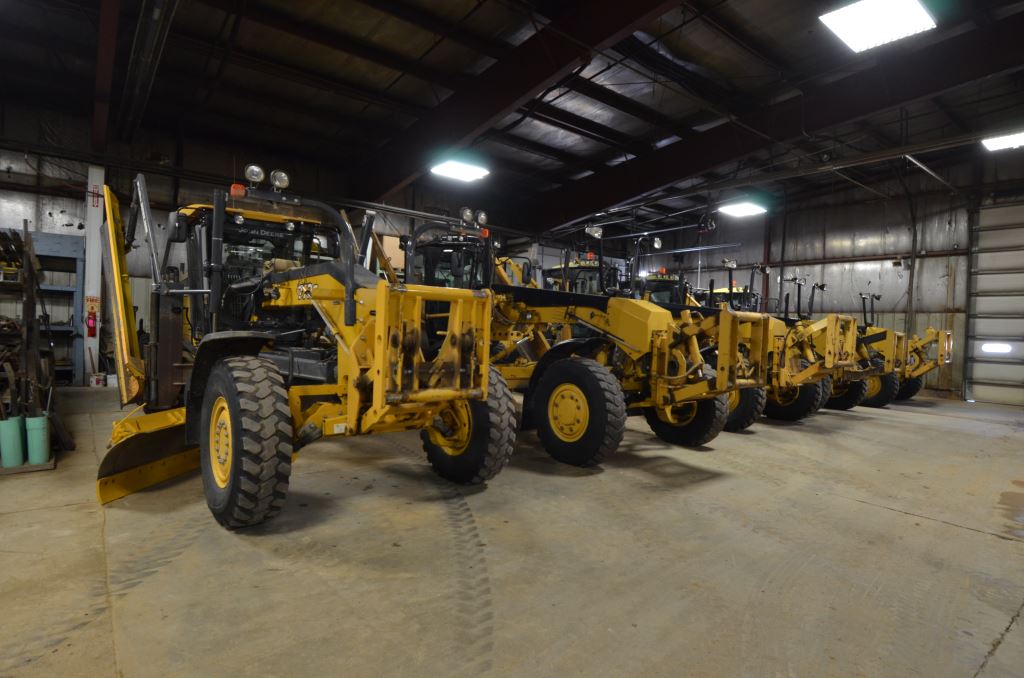
Flooding from the spring thaw subsided, then rain followed. We started documenting the damage and repairs, which totaled several hundred thousand dollars. It turned out we qualified for assistance from FEMA. All the damages, repairs, and red tape have had a major impact on our operating budget. (While the costs are covered, we need to wait six to eight months for reimbursement.)
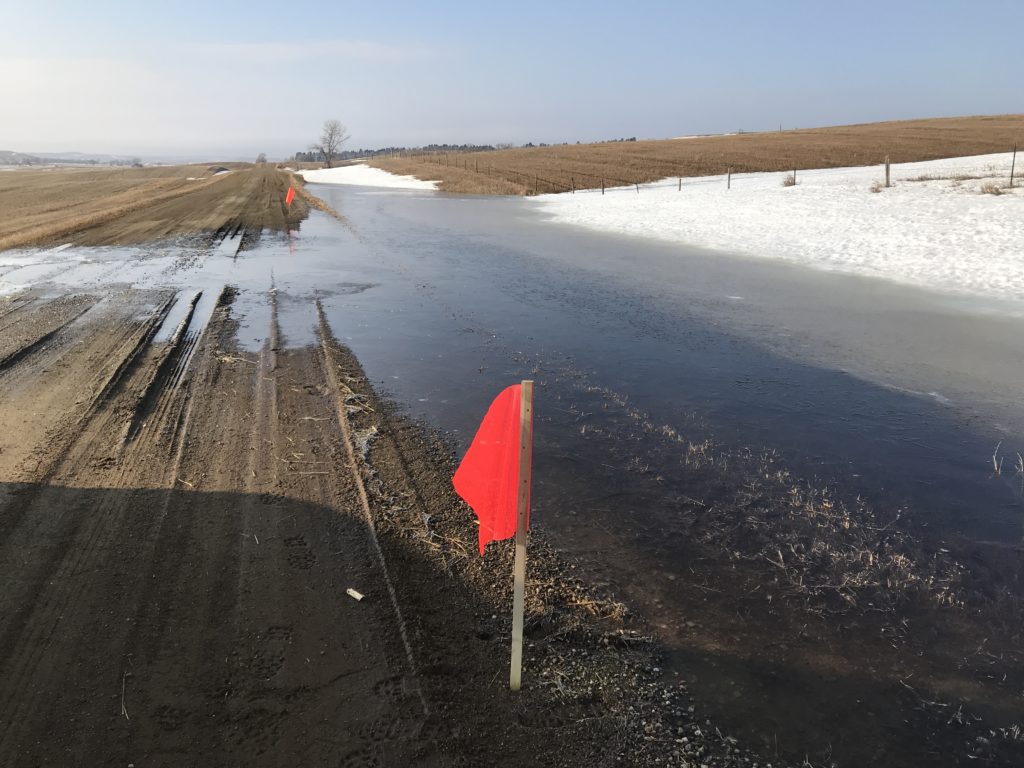
And unfortunately, there is speculation that based on actual and projected snowfalls upstream in the Missouri River Basin, there may be some flooding in the eastern part of Morton County in 2020. We will see.
State Support
Pinkus: How is the state government addressing the infrastructure needs in North Dakota?
Saiki: In 2019, Governor Burgum signed a bill into law (nicknamed Operation Prairie Dog), designed to financially help counties in North Dakota that do not produce oil. (The oil-producing counties get a portion of the tax collected from each barrel of oil extracted; non-oil-producing counties do not see any similar income.) The legislature agreed to take a portion of the tax from oil production and set up an account to collect the revenue. When the revenue reaches a certain threshold, the proceeds will be distributed to the non-oil-producing counties for road and bridgework only.
Each county’s distribution is based on a formula that accounts for population, miles of roads, bridges, etc. The distribution is determined by the revenue collected and the period of time. The more oil that’s produced and the higher the market price, the earlier we will see revenue.
Pinkus: How do you expect the new law to help Morton’s infrastructure specifically?
Saiki: Based on the legislation, we may receive some funding in 2021. At one time I had heard Morton County could see up to $1 million per biennium, if conditions remain as the legislators envisioned. The market and time will tell.
Any additional revenue will be very beneficial to our highway department, enabling us to accomplish our infrastructure goals, such as:
- replacing narrow aging bridges,
- applying additional gravel to roads,
- overlaying asphalt roads, and
- adding life and longevity to our aging highway system much earlier than projected.
Based on our current projections, there are bridges that will not be replaced in the next 10 years, my remaining time at the Morton County Highway Department. With predicted additional funding through sources such as the Prairie Dog bill, we could replace some of those bridges in the next four or five years. We are looking forward to that.
